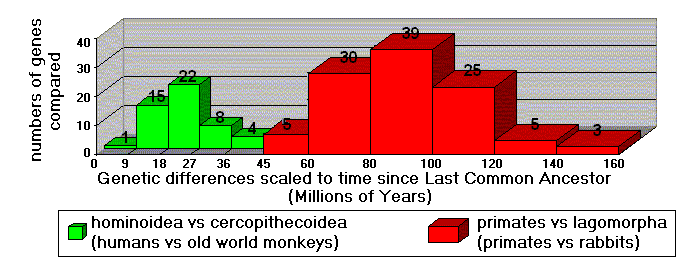Osteocalcin itself may not be able to determine the puzzling lineages of australopithecines and humans over the past two million years, but the method could be applied to other proteins that might give a clearer picture.I find it amazing that evos blast christians or IDers for their 'faith' but they readily accept this article as proof of whatever they want it to be without reading the last sentence. IOW, "We are concerned that this discovery will fail to provide any conclusive evidence just as many others have failed, but we'll trumpet the discovery long enough to get in included in textbooks long after it's been discredited."
As I think Nebullis mentioned, this is just one protein of many. Here's what happens when they examine a range of sequences:
MULTI-GENE COMPARISONS Cytochrome c phylogenies are sometimes imperfect, since they are based on a single gene, and mutations can occasionally reverse previous mutations. In Figure 1, the lamprey [cytochrome c] appears closer to humans than does that of tuna fish, contrary to evolutionary expectations*. Biologists have addressed this problem by looking at more and more genes. Some genes evolve faster than others, some slower. Of course, the fact that some genes change faster or slower than others doesn't disprove evolution.
A recent study (Kumar and Hedges 1998) involved hundreds of genes, for dozens of species. In Figure 3, the 50 genes used to compare old world monkeys to humans have a strong "peak" indicating 23 million years (MYa) since the last common ancestor of these species. The bell-shaped curve centered at 23 MYa is nothing less than a strong biotic "signal." When 107 genes of primates and rabbits are compared, these differences correspond to 90 MYa since the primate/rabbit common ancestor. The "message" is clear: humans are genetically much closer to old world monkeys than they are to rabbits. This accords perfectly with evolutionary expectations: the last common ancestor of primates and rabbits is much farther back in time than the last common ancestor of humans and old world monkeys. Had the genes turned out otherwise, Darwin's "fantasy" would have evaporated.
Figure 3. Comparisons of hundreds of genes. (Data from Kumar & Hedges1998)
